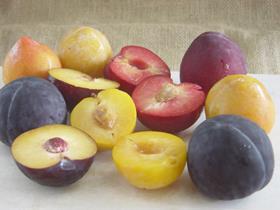
Already it is clear that 2015 is not going to be an easy year for the South African fresh produce export industry. Things have not started well for stonefruit and grape growers, with the January grape market in Europe and the UK generally being referred to as “the great depression”.
Just how this will develop from here given the conditions and factors now affecting the European markets, remains to be seen. Sources say that the Russian problems will reshape the world’s markets and it will lead to instability for years to come.
While the plum market has been under pressure because of a bigger South African crop, which was earlier than in previous years and resulted in a bigger proportion of smaller fruit, nothing could have prepared the grape growers at the start of their season for what would happen next. In hindsight, it is clear that too much fruit from a season that is perhaps the earliest in the history of the South African grape business was shipped to Europe.
This is illustrated by the fact that at the end of week two, growers had packed 28.4 million cartons compared to 17.4m cartons last year. The volume is also bigger than the 2013 and 2012 crops at that time in the season. And by week two 87 per cent of the crop had been shipped to Europe and the UK.
At the start of the season chief executive of the South African Table Grape Industry Association (SATI), Willem Bestbier, said that dependence on the traditional markets is of major concern for the whole South African fruit industry, but particularly for table grapes.
“Europe is stagnating in population growth, while there is real growth in the economies of the East. It is clearly time for new strategies to correct this because it prevents us from taking advantage of the opportunities in the East,” said Bestbier.
It is clear that so far this season these warnings had little effect on the decisions of where to ship. However, one must also realise that this is an unusual season, with big crops in the early-season areas being followed by the harvest in later areas, which began much earlier than ever before.
At the end of the second week in January, the Berg River region had already packed 4.1m cartons compared to last year’s 668,000 cartons, while the Hex River had an unprecedented early start to deliver 2.25m cartons, compared to 269,000, by the end of week two.
This is an additional 3.2m cartons that were not in the market the year before. Coupled with this, the Orange River delivered some 16.5m cartons by end of week two compared to 12.3mlast year.
The result was going to be obvious. The early fruit has been “sitting around growing old”, as one source called it, and it became a buyer’s market. “Buyers are making their own price and we have to ride out the storm,” said one UK source.
There is light at the end of the tunnel, though, with reports now beginning to indicate that stocks are clearing and with the season due to end early, February and March is expected to be much better.
The predominance of smaller sizing in plums resulted in the South African Stone Fruit Producers’ Association (SASPA) warning growers about the impact on returns during the current plum export season. SASPA chairperson Pieter de Necker called on growers and marketers to act responsibly with the export of small fruit, in order not end up shipping fruit at a loss.
South Africa’s total stonefruit export volumes will reach more than 18.3m cartons this year. Apricot exports, which have already concluded, were a disappointing 20 per cent down on last year at 772,557 cartons, but this was more than made up for in peach and nectarine exports. The nectarine export crop is predicted to be 24 per cent up on last year, at 3.7m cartons, and peaches increased by 19 per cent, to 1.9m cartons. The plum crop is expected to be seven per cent bigger than last year, at 11.3m cartons.
With early pears now entering the market and apples soon to follow, it is clear that conditions will remain tough in Europe and the UK. The main reason for this is sizeable European crops, but more importantly it is the ongoing impact of the Russian ban. The early citrus will be shipped from March onwards and South African sources are stating they are simply not in a position to make plans for the new season yet.
The ‘Russia factor’ is expected to have a big effect on the South African fruit sector for years to come, but the citrus sector will probably be most severely affected. With the Russian problem, European suppliers are focusing enormous resources on the Middle East and this is likely to affect South African exports to that region.The only South African sector that seems to have more options is apples, which have a strong local market and a growing market in Africa.
Most importantly, the Citrus Black Spot (CBS) issue, and possible other phytosanitary issues that have more recently appeared on the horizon, looms large for the South African citrus sector. The citrus strategy for the season will only be decided after Fruit Logistica, but it is clear that industry leaders are extremely worried about what is seen as the very high risk of CBS interceptions in the southern European states compared with the other countries.
It is reported that, as a principle, South Africa is committed to supplying all markets as normal this season according to demand, and would want to avoid a selective marketing campaign, but despite this the situation in southern Europe is viewed as “dire”.
Grape cartonspacked by week two:
2014 2015
Berg River: 668,000 4.1m
Hex River: 269,000 2.25m
Orange River: 12.3m 16.5m
Total: 17.4m 28.4m



